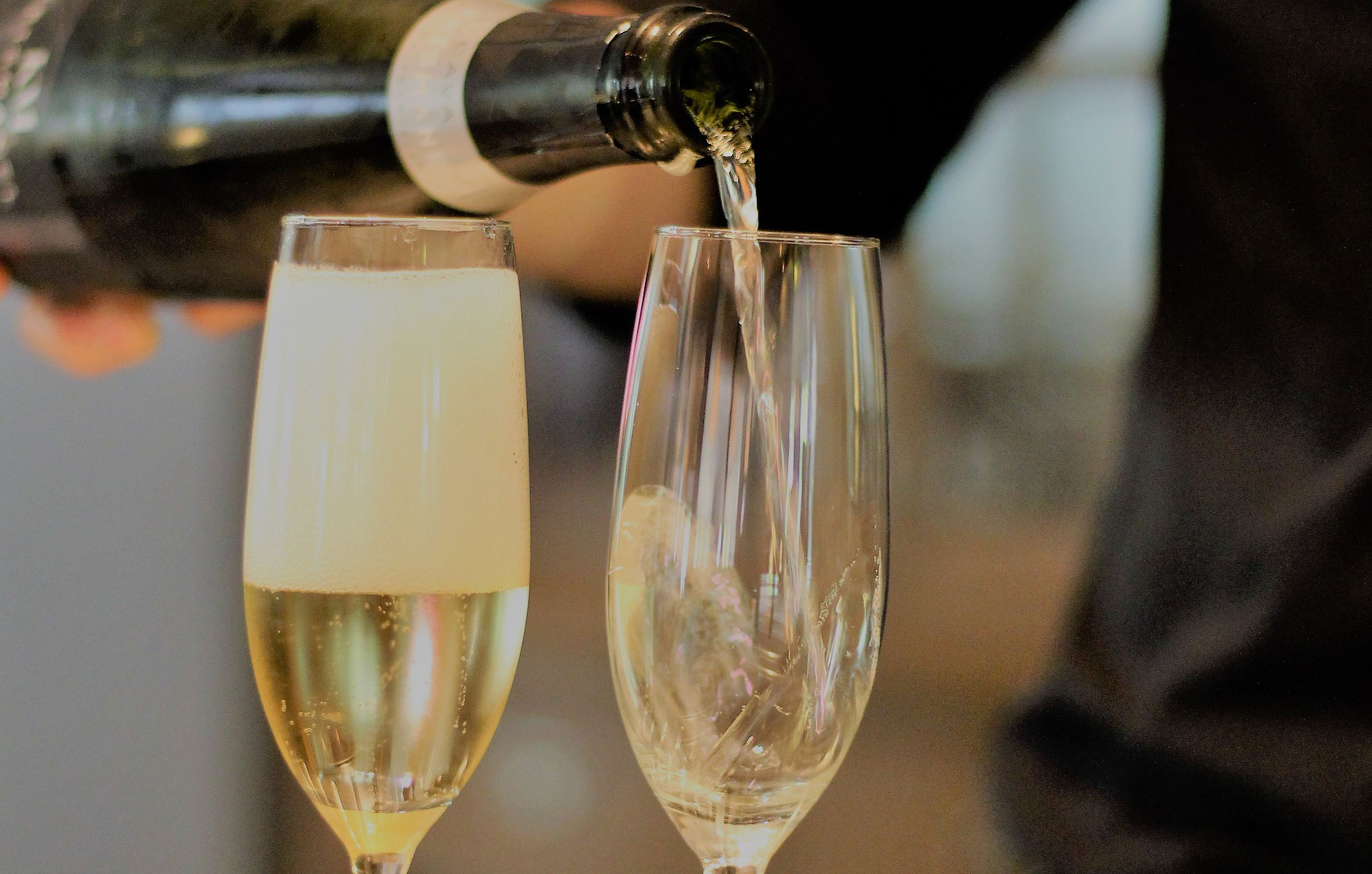Cava used to have a reputation for being cheap and low-quality. But, the cava industry is undergoing quite the reformation right now, with some specialty types costing as much as $200. There are lots of different types of cava on the market, with different flavors, ingredients and prices. So what is cava and how do you decide what’s the best cava champagne?
Cava is a type of sparkling wine from Spain. It’s made using the champenoise traditional method, meaning it’s made like champagne. Cava means “cave” or “cellar” in Spanish and refers to the caves used to age it when it was first made. It’s origins date back to the 1860’s when Josep Raventos went to Champagne, France and tasted its bubbly wares. He returned home, vowing to make something similar. Lucky for us, he succeeded and the result was cava.
Under $10
-
Jaume Serra Cristalino Brut Cava (Approximately $9)
You’ll be surprised by this cava. There are strong apple and citrus aromas, and just a hint of toasted bread on the nose. The palate is fruity, with apple, citrus and a mineral finish. It pairs well with nearly anything and goes just as well with greasy, fried foods as it does with shellfish and gourmet cuisine. Don’t let the price scare you off. It’s quality bubbly at an extremely affordable price that makes it excellent for parties.
Under $20
-
Freixenet Elyssia Pinot Noir Brut (Approximately $18)
This excellent cava comes from one of the most trusted of Spain’s cava producers. It’s sweet, fruity and dry, with a palate of apple, honey, white pepper and minerals. Raspberry, cherry and strawberry aromas are strong, and there’s just a hint of mint that comes through. This is a rosado cava, meaning it’s got a pink color to it. The elegantly designed bottle does a great job of showcasing its deep, rosey color. Not only will the flavor please nearly everyone in the crowd if it’s served at a celebration, it’s pink tint makes it a festive addition to Summer parties or bridal showers. Pro tip: it tastes best when it’s had some time to sit in the glass just long enough to let the bubbles subside a bit.
-
Juve Y Camps Rose Brut Cava (Approximately $18)
This cherry- red cava is big on flavor and low on price. There are hints of berries, florals, cherries, truffles and toasted bread on the nose. It has a rich flavor palate with almonds, strawberries and cream, cherry, honey and just a bit of spiciness. Flavorful, fruity and just a little sweet, Juve Y Camps Rose Brut Cava will easily please a crowd, but no one would blame you for indulging in its elegance alone, either.
-
Anna de Codorniu Cava Brut (Approximately $14)
This is a delicate, yet crisp and refreshing cava choice. It has aromas of apple, bread, pineapple, grapefruit, lemon, lime and other tropical fruits. It’s flavor palate is deliciously fruity with green apple, d’Anjou pear, quince, peach, lemon and lime. The tropical fruits, sweetness and it’s fine, continuous and refreshing bubbles make it a good choice for summer get-togethers. It’s recommended as an apertif before meals and it has a finish reminiscent of Key Lime Pie, so the effect is a bit like indulging in dessert before dinner.
-
Freixenet Sparkling Cordon Negro Brut Cava (Approximately $12)
This cava is widely popular and one of Freixenet’s best-selling products. It’s got a straw-like color that’s typical of champagne and cava, and a fruity, refreshing flavor. There’s an acidity to it that’s apparent, but not overpowering. The brand is well-known for this particular cava variety’s black bottle, which is both flashy and sophisticated, creating a pleasing aesthetic that makes it stand out. The fruity, crisp palate makes it go well with gourmet food, good to serve at a party, or for solo indulgence.
Under $30
-
Segura Viudas Brut Reserva Heredad Cava (Approximately $25):
This bubbly treat is made entirely from fruit that was grown on an estate in Penedes, Spain, which is the epicenter of Spain’s cava production. It’s aged for 30 months or more, giving it a lot of complexity. On the nose, you get apple and floral notes with hints of honey and brioche. It’s got apple, quince, dried fruit, citrus and mineral flavors that come together to balance the acidity and bubbles. It’s overall creamy, rich, sweet and smokey, which is just as complex as it sounds. It also comes in a bottle that looks great, as well, because it’s adorned with decorative pewter embellishments.
-
Mas Candi “Segunyola” Brut Nature (Approximately $21)
Macabeu grapes have long been the cava standard, but Mas Candi is trying to establish the xarel-lo grapes. They’re particularly good at showcasing limestone minerals and they make it easier to detect subtle herbal nuances. Segunyola is solely comprised of of xerel-lo grapes. It has fruity aromas of apple and pear, with earthy tones, as well. The flavor palate is fruity and citrusy. Segunyola produces fine bubbles that create a refreshing fizz. The overall combination makes this cava a great mid-price range choice.
-
Mas Goma Vendrell Olivella Brut Nature (Approximately $30)
Another entry on this list that uses xarel-lo grapes, Mas Goma uses grapes from 60-80 year old vines to create this cava. It’s then aged for 4 years or more, which creates a subtle, rich texture and adds a lot of complex flavors and aromas. The flavors are fruity, with green apple and pineapple leads. There are strong aromas of lemon and pine. Then, there’s a dry, chalky finish. Because of the fruity flavor, this cava would make an excellent addition to any cocktail that calls for “sparkling wine” and could be a good substitute for champagne in cocktails.
Under $50
-
2007 Gramona III Lustros Brut Nature Gran Reserva (Approximately $50)
This cava is a little more pricey than some of its peers on this list, but that may be because of all of the ingredients in it, and the quality of it. There are aromas of butter, nuts, dried fig, citrus, Cafe Au Lait caramel and flowers, with herbal notes of camphor, bay leaf and fennel. It has a great overall citrus scent. The flavor palate is that of flowers, herbs, bitter lemon, pastries, bread and nuts. It has a dry, mineral finish. It comes in a black bottle that’s sleek and stylish. With all of the aromatic notes, it’s probably best to try it both cold and warmed with your hands so that all of the smells and flavors can be experienced.
Under $100
◦ 2007 Agusti Torello Mata Kripta Brut Nature Gran Reserva (Approximately $80-$100)
One look at this exquisite cava’s bottle and you’ll know exactly why it costs as much as it does. It’s light, crisp and complex, a little salty and a little savory. It’s aged for 48 months or more, which is probably what lends to its complexity. With notes of green apple and nutmeg, a creamy texture, and a finish of toasted bread and truffles, this is a truly luxurious cava choice. Not only does it taste great, the bottle design is beautiful. It’s in an unusual bottle with a round bottom, which means you can’t sit it on a flat surface. You can, however, seat it in an ice bucket without incident. The bottle itself is quite decorative and artistic. It makes you think “If they put that much craftsmanship into the bottle, imagine how much they put into the cava inside it”, and you won’t be disappointed.
Conclusion
Cava may be new to you, but it’s an excellent addition to any celebration or party. It can be easily incorporated into cocktails. There are tons of sparkling wine or champagne cocktails online, and cava can be used in place of champagne in any of them. It’s also great on its own. In fact, I would recommend trying it by itself before deciding to mix anything with it. Cava’s newfound popularity means that you can find one that meets your budget, no matter how big or how small your budget is. You should have a greater understanding of what to look for when buying a quality cava now, so go forth and indulge.

